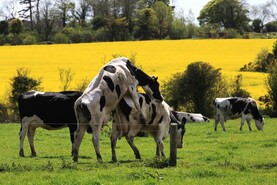If the calf market of spring 2022 has taught us anything it has to be that there is a clear divergence in price depending on the quality of the calf on offer.
The introduction of the sexed semen lab in Moorepark has provided a massive opportunity to dairy farmers to use AI sires, identified within the dairy beef index (DBI), both earlier in the breeding season and in greater numbers.
The benefit the DBI has brought to beef selection for dairy herds is in identifying sires that will continue to deliver the key traits of calving ease and gestation length but at the same time delivering a calf with better beef genetics for the beef farmer.
Using the DBI
Looking at the overall DBI figure will tell you very little about what the bull will deliver as the overall figure is a culmination of both the calving traits and the beef traits together.
Farmers need to look within the index.
Calving traits are always going to be the first figures dairy farmers look at when selecting beef sires.
It is really important that farmers look to maximise the beef value and the carcase weight figure of sires.
The sires outlined in Table 1 are a selection of the sires that will be used this year for the 2023 crop of Thrive programme calves. The aim is to have a minimum value of beef figure of €50 and a positive carcase weight figure of at least 5kg.
While there are sires within all breeds to deliver desirable beef traits, in reality, more than 80% of mating’s are going to be to early-maturing breed types and so the table is weighted more towards these breeds.
One of the greatest problems identified within the Thrive programme is the issue of early-maturing heifers going over fat and out of specification at light carcase weights.
This is where smaller-framed dairy cows have been mated to a beef sire with low carcase weight figures resulting in an animal that will fail to meet minimum carcase weight specifications or be penalised for being overfat at light carcase weights.
As Teagasc has reported in recent years, less than 40% of dairy-beef farmers are still rearing calves over a five-year period. Lack of profitability and poor calf quality have been cited as the two main reasons for this.
In the next couple of years, we will see a move to genomic tagging of all calves at birth which, combined with the new commercial beef value (CBV), will provide greater information to the calf buyer in the coming years.






 This is a subscriber-only article
This is a subscriber-only article











SHARING OPTIONS: